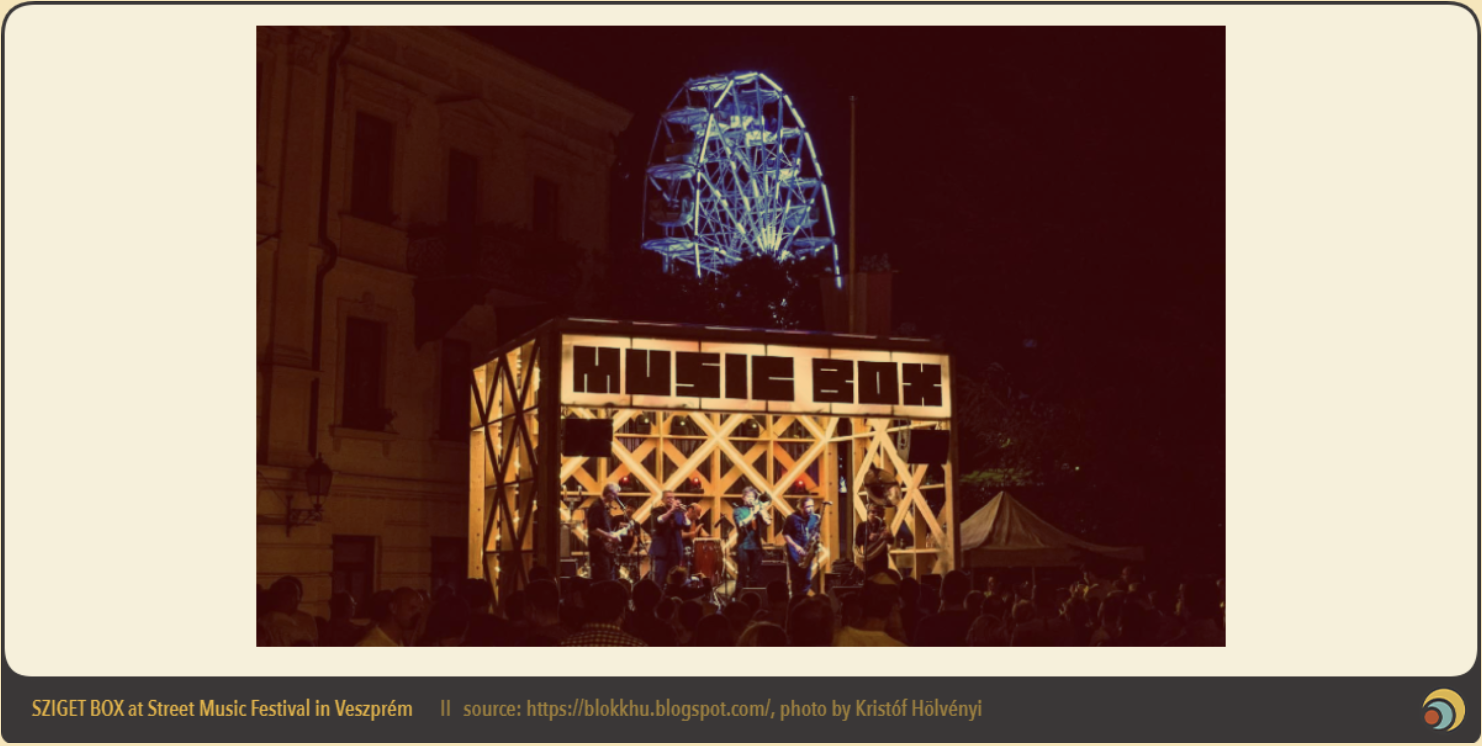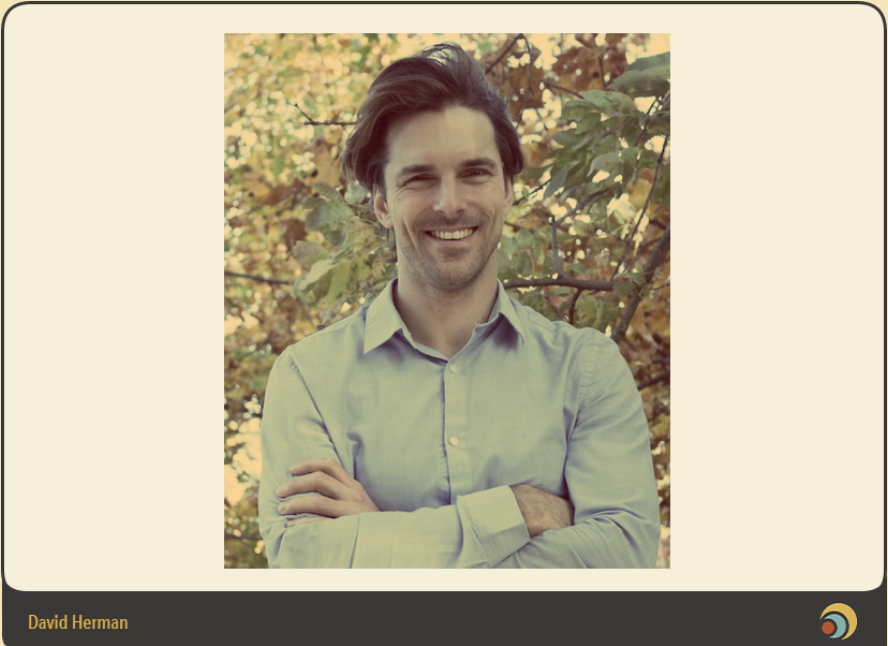Our guest today is David Herman, an Amsterdam-based freelance project developer who has extensive experience in Creative Europe projects. We have talked to David about cultural projects funded by the EU but also about how a trained pianist would end up working on EU projects.
We will start with a personal question for once. You are on the one hand a pianist, but on the other a Creative Europe expert. Surely that is not a happy accident…
Well, that’s complicated. After my graduation as a musician, I tried to work as a pianist for a couple of years, as, for example, a piano teacher, but it is pretty hard to make a living and progress in your career if you are a pianist, except for the lucky two, say, two percent of conservatory alumni. So I went on to study management at Antwerp and ended up working for Dutch Culture, an agency of the Dutch Ministry of Foreign Affairs and Ministry Culture. Dutch Culture works in the cultural diplomacy of the Netherlands, but it happened to have the Dutch CE Desk included. I was assigned to the Creative Europe Desk as an adviser, the official desk for CE enquiries in the country. It was clear that I wanted to work in the creative sector, but CE came as an accident.
So you have experience both as an officer at a CE Desk, and also as a consultant of CE project development, having an overview of both sides. What are the main policy aims behind CE?
Creative Europe is a complicated programme to understand, especially as those working in the cultural and creative sectors just want funding to create. On the one hand, it is a programme to strengthen the cultural and creative sectors in Europe, which is a relatively broad category and CE differentiates between media (a huge industry in itself) and the cultural sector. This entails capacity building for creative professionals, skill development, networking, transnational travel as well as the adoption of modern technologies and digitalisation. This would modernise the cultural sector and make it more competent.
On the other side of the equation, and this is what makes the programme really difficult, is that the European Commission also sees the cultural and creative sectors as a vehicle to solve other problems that Europe has – societal, economic, environmental, and so on. CE is not only supporting, say, an orchestra to continue to play music but rather expects the orchestra to be a vehicle of solving other problems. This two-foldedness makes CE quite particular and also quite difficult – but also very interesting.
Did I get it right that CE also has a cultural diplomacy aspect to it?
A limited one. CE project partners, just as in other programmes, need to be EU or EEA countries, with some countries associating with the programme. This means that the majority of activities need to take place within the EU. You might have networks with people from the United States, but not partners from the US.
However, Creative Europe has two strands, MEDIA and CULTURE. MEDIA’s ambition is to create a European film industry that can compete with Hollywood. So cultural diplomacy is integrated within the MEDIA strand, making European cinema more visible globally. But even here, the emphasis is more on supporting players within Europe, and not that much on creating links between European and non-European actors.
And indeed in the media sector, you can see interesting problems emerging in the internet age. For example, video streaming platforms will only have American films and series, while there is no “European Netflix.”
Netflix only takes the very best of European films, but anything worse than that – still really great films – will likely never reach Netflix. There is no European counterpart where you can see all European cinema, that’s what I meant, especially arthouse movies. But true, Netflix is improving in this sense. You need to see the cultural diplomacy aspect in this light.
You mentioned the MEDIA strand is mostly about films, so is there a similar narrowing of scope within the CULTURE strand, which could theoretically include anything from pop music to painting?
No, there isn’t. Basically, anything falling under cultural and creative sectors, from paintings to creative platforms, can fall under the scope of the programme and that, especially with the creative sectors, can be quite, quite broad indeed.
What’s, in your opinion, a very good example of a Creative Europe project – one that is a good project, but also exemplifies CE well?
Well, with a bit of self-promotion, I can reference Murals4Communities which offers a cultural and creative solution to a societal, in this case urban, problem, social exclusion in certain areas of cities. How do you rejuvenate these areas?
On the other hand, M4C was about creating a format for mural artists to co-create, to expand their work and to create murals in other countries together with other mural artists (with whom they had not cooperated before). It is a very good example of a CE project.

Another project I worked on, is about an online platform for libraries, finding a way for libraries to deal with an increasingly digitised world, where people can find any information they want online. People no longer go to libraries to look things up, like they did until the turn of the century. So libraries, together with designers, worked to create an online system (a good example of a CE project moving beyond traditional notions of art), an artistic co-creation space online to create new experiences for people looking for information who would this way end up on a library website. The project is called Open Digital Libraries for Digital Users (ODL). I am bringing this up, because here we focused on a non-urbanistic problem.
Another really good project, that unfortunately didn’t make it to implementation, was the Sziget Festival pilot project…
Actually, I wanted to bring that up, cause that was something quite new, wasn’t it?
Yeah, that was under the so-called Music Moves Europe initiative, devised in 2018, which was meant to be a separate strand within CE, focusing on the European music industry (speaking of popular music, of course). Music industry, too, is dominated by the US and the UK, and there was a desire to address this challenge. This resulted in a couple of pilot calls with the aim to gain knowledge and experience on what to include in the new strand and how to formulate the new calls. The Sziget Music Box project was developed for one of the pilot calls – it was about understanding what young musicians need to become more visible and move forward with their career.
This project wanted to extend an already existing stage at Sziget Festival, the Music Box, into a training and capacity building programme for young musicians. They would also get the chance to make recordings, to co-create with each other. This would lead to an improved understanding of what young singer-songwriters need, which would be fed back to the European Commission, so they can create new calls under Music Moves Europe in light of the learnings.
But then the implementation should have happened in 2021, and the 2021 Sziget was cancelled due to the COVID-pandemic, and so the project, despite the very good feedback from the Commission, never happened. And Music Moves Europe never happened, that’s the other thing.

Obviously, the pandemic hit the cultural and creative sectors significantly. This haven’t had the same impact on all industries – for instance, book publishing wasn’t much impacted, indeed they probably benefited from people spending more time at home, TV also benefited, but production was disrupted by lockdowns, and then the music industry was really hardly hit by lockdowns. So is there an initiative to promote covid recovery of the cultural and creative sectors within CE?
Only in so far as it is included in the objectives of the various calls and is therefore relevant within the programme. Furthermore, there is an abundance of recovery funds, which will also foster cultural recovery. It is also part of Interreg programmes (for instance, the Interreg North West programme has a priority focusing on the recovery of sustainable cultural industries and tourism).
However, there is no EU-level initiative meant for the recovery of the cultural sectors, but recovery is a strong theme within the CE programme and others.
If you want to do a successful CE project, you need two elements, right, an element of co-creation of art and…
Co-creation of something creative – not necessarily art, but something creative. When you hear “art”, you associate art galleries, and concert halls, Picasso, and Mozart, and maybe the Beatles. However, CE is much broader than art. But co-creation is important, yes.
…and then there is the thematic element, the societal benefit. What I wanted to ask, do you think after project completion participating creatives will continue working in a societally, environmentally, urbanistically sustainable way?
That’s the hope, isn’t it? But what happens in CE is more holistic than something that could be captured on the level of a single artist. For example, the Craft Hub project was addressing that crafts are disappearing due to the mass production of products. This is a holistic system which isn’t about a single artist or two. And this means that even if one particular artist isn’t interested in continuing socially conscious creation, the project result will be there for all to use (in this case, the digital repository), and so the work can continue on its own.
This is exactly what makes CE so difficult: in an important sense, it isn’t about the individual artist who may or may not use what they have learnt, it is about creating a system around project learnings.

David Herman is an EU project developer, fundraising expert & content writer. His ambition to work on projects with a European dimension comes from his European background, being half Hungarian & Dutch and having a vast experience in living and working in a number of different EU countries. With his roots in the cultural and creative sectors, first he started helping cultural organisations to develop projects under the EU Creative Europe programme and Dutch national funds.
During his work career, he expanded these competences on EU project development to a wider field of project types and clients, assisting the realisation of transnational projects revolving around R&D, innovation & regional economic development, climate change adaptation, social integration, urban policies and business acceleration of SME’s, all to becoming a fundamental part of his work today. To know more click on his website.
